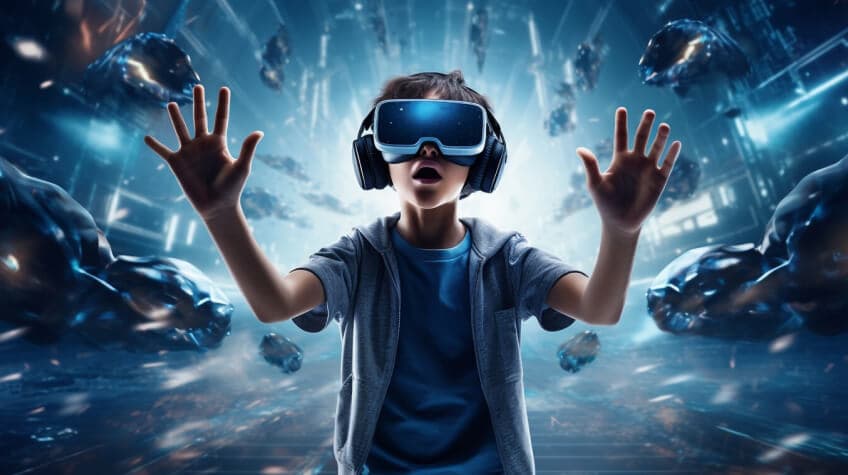


Video Games

The future of video games is inseparably linked to the development of technologies that continue to change our ideas about how and what we can play. By 2030, the world of video games is likely to undergo enormous changes, and today we can already see the first steps in this direction. Let’s take a look at which technologies and innovations will play a key role in this process.
One of the most anticipated areas in game development is virtual reality (VR). VR games have already become available to the mass market, but their full use is limited by the need for special devices such as headsets and controllers. However, by 2030, it is expected that VR technologies will significantly improve, becoming more accessible and user-friendly.
VR headsets may work without the need to connect to a computer or gaming console. They could become more compact, with enhanced graphics and opportunities for deeper interaction with gaming worlds. Games will immerse us in virtual environments, creating a sense of real presence. Instead of looking at a screen, players will literally “find themselves” in the game, interacting with the environment and other players. It is highly likely that games will go beyond simple visual and auditory experiences, incorporating tactile sensations through sensor-equipped suits, creating an entirely new experience.
Augmented Reality (AR) is another exciting trend that will continue to evolve. Unlike VR, AR integrates virtual elements into the real world. This will open up new horizons for creating unique gaming experiences, especially for mobile devices. Imagine playing a game where elements of the game appear right on the street, in your home, or anywhere you are. This trend promises to make games more interactive and accessible in the real world.
Another key technology that will change gameplay is artificial intelligence (AI). Currently, AI in games is used to create opponents who can adapt to a player’s style of play. However, in the future, AI will significantly evolve, becoming smarter and its abilities more personalized.
With the help of machine learning, AI in games will be able to dynamically change the storyline, create unique missions, and even adjust gameplay to the personal preferences of each player. This will allow for the creation of games that are unique to each playthrough. For example, the plot and decisions a player makes will significantly impact the events and the world in which the action takes place.
Additionally, AI can be used to create more “alive” and intelligent NPCs (non-player characters) that will be able to have meaningful conversations with players, respond to their decisions, and influence the course of the game. This will make interactions with gaming worlds much more realistic.
One of the biggest achievements in the gaming industry is the development of cloud technologies. In the coming years, more and more games will be launched and stored in the cloud, allowing them to be played on virtually any device — from powerful PCs to mobile phones and televisions. Services like Google Stadia and Xbox Cloud Gaming already allow games to be played without the need for expensive hardware. This trend will only accelerate, and players will be able to enjoy games with high-quality graphics on devices that previously lacked the power for such performance.
Cloud technologies also promote cross-platform play, allowing players from different platforms (PC, consoles, mobile devices) to play together. This means that gamers will be able to interact and compete with each other without worrying about what device they are playing on.
Another exciting area is the use of biotechnology and neural interfaces to control games. In the coming decades, devices are expected to emerge that will allow players to interact with games using neural impulses. These devices will be able to read brain activity and translate it into commands, eliminating the need for controllers or keyboards.
This will open up new opportunities for creating fully intuitive games, where all actions are carried out by the power of thought. Players will be able to “think” about their actions in the game, and these thoughts will directly translate into actions in the virtual world. This trend may also affect entertainment systems in general, making them more accessible to people with disabilities.
As technology advances, a number of important ethical issues arise. For example, how will user safety be ensured if games start working with biometrics and neural interfaces? How can player data and personal parameters be protected from abuse?
By 2030, new security standards for such technologies may be developed, as well as improved methods of protecting privacy. However, it is important to remember that with the development of new technologies, new threats will emerge, and user safety will become an important part of the gaming industry.
So, by 2030, games will likely become much more personalized and innovative. We will be immersed in virtual worlds, interact with intelligent characters, enjoy cross-platform games, and use neural interfaces for control. In this process, it is important not to forget about security and how technologies can improve the accessibility of games for all.
The future of games promises to be not only exciting but also radically transformative in terms of how we perceive entertainment.